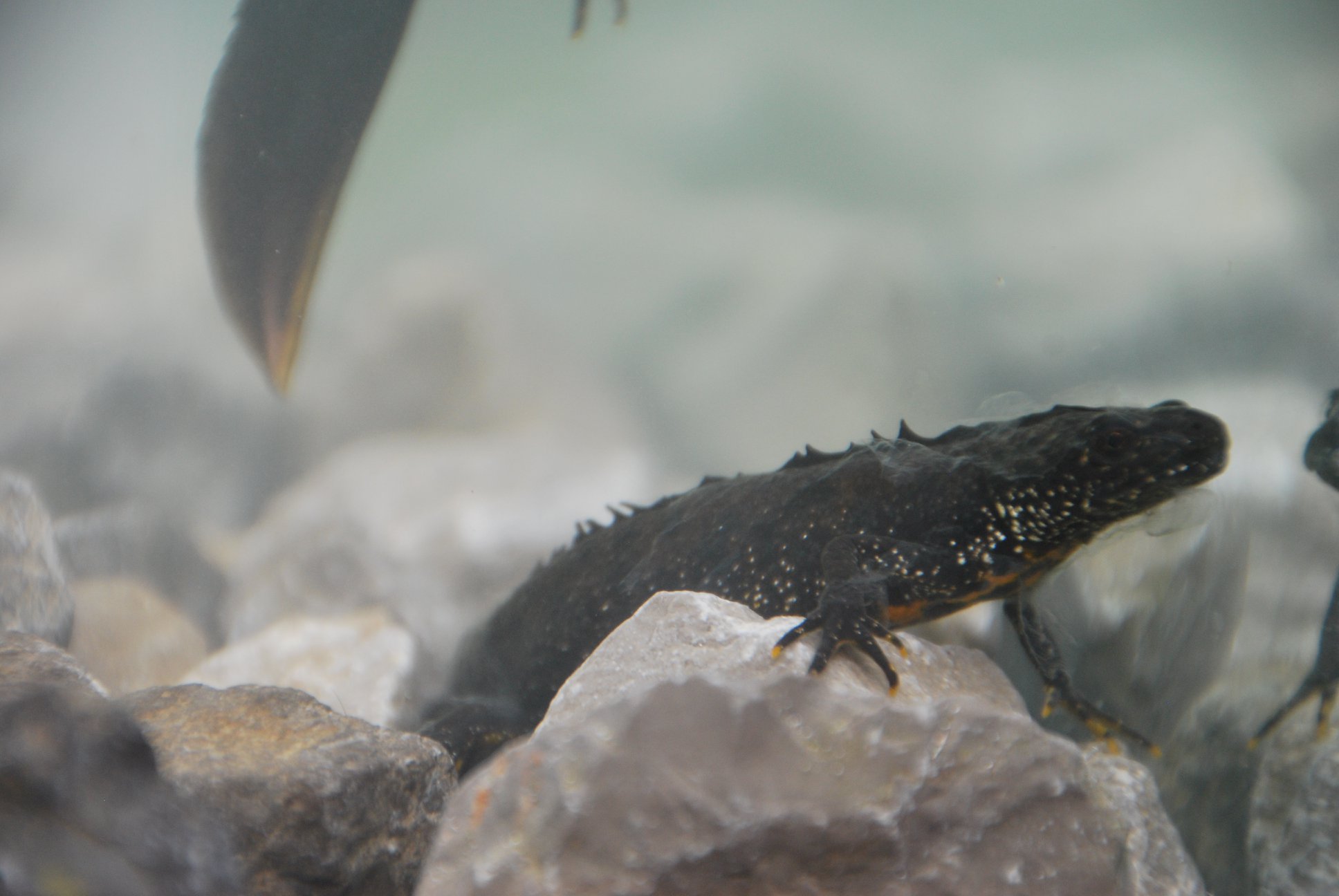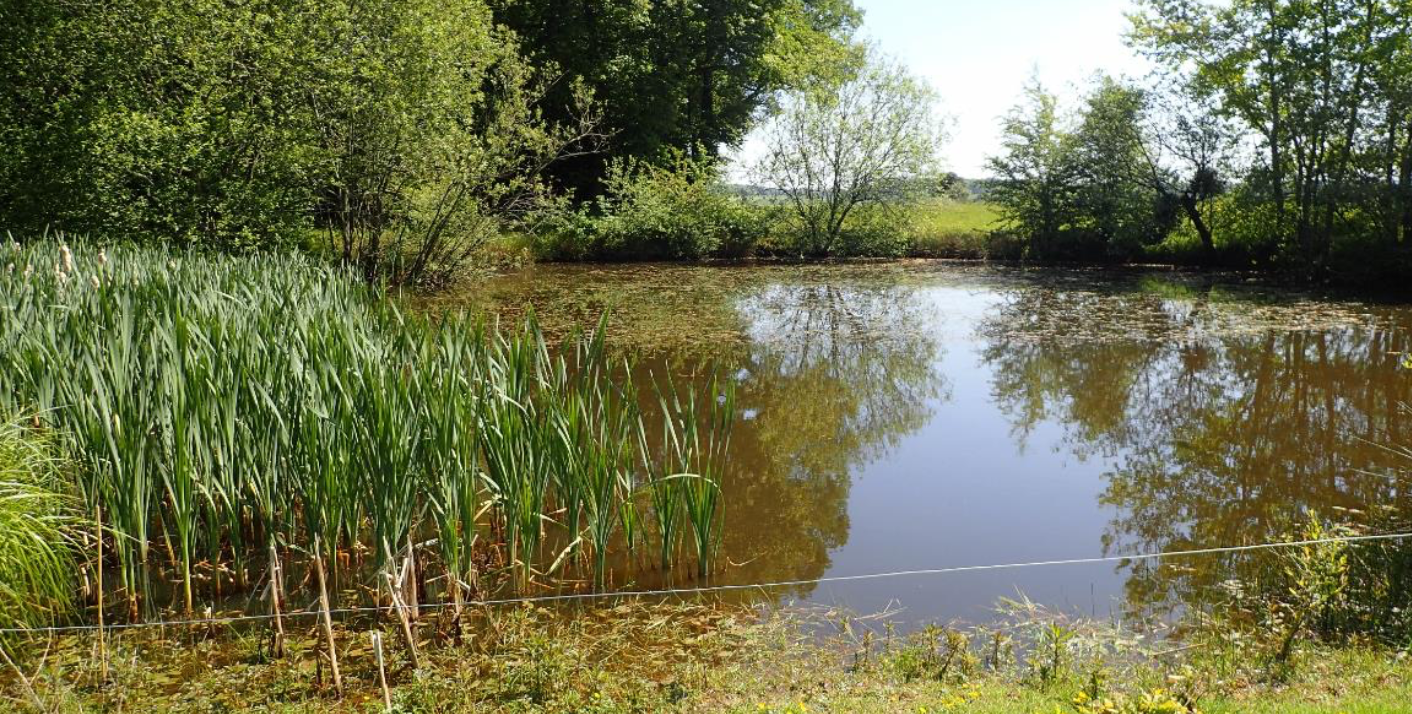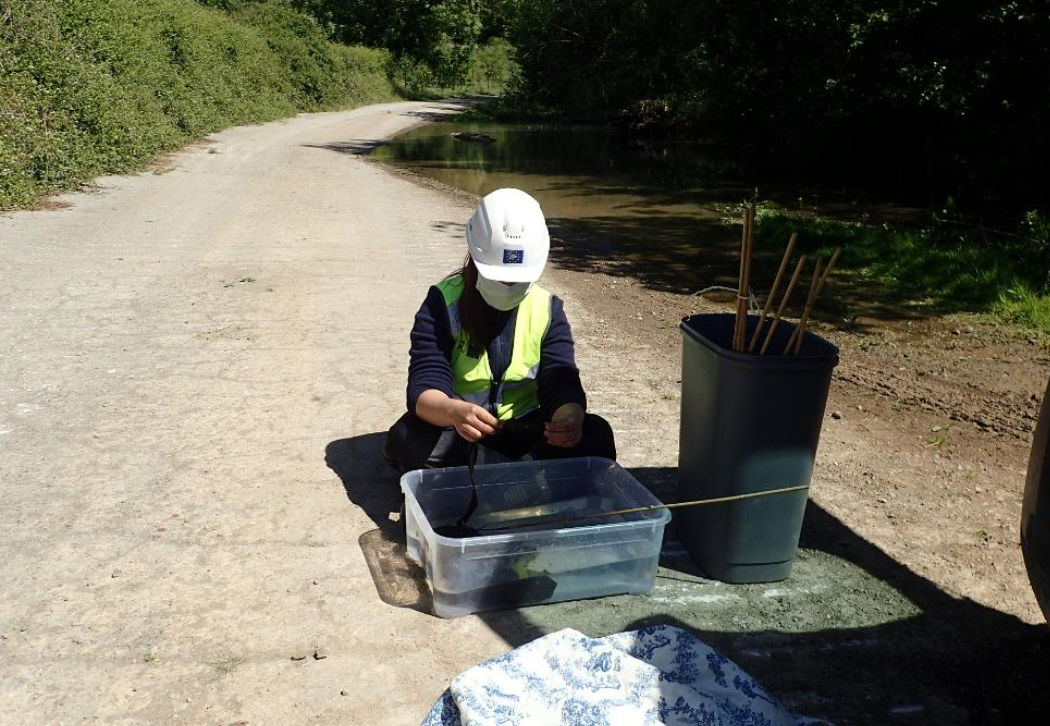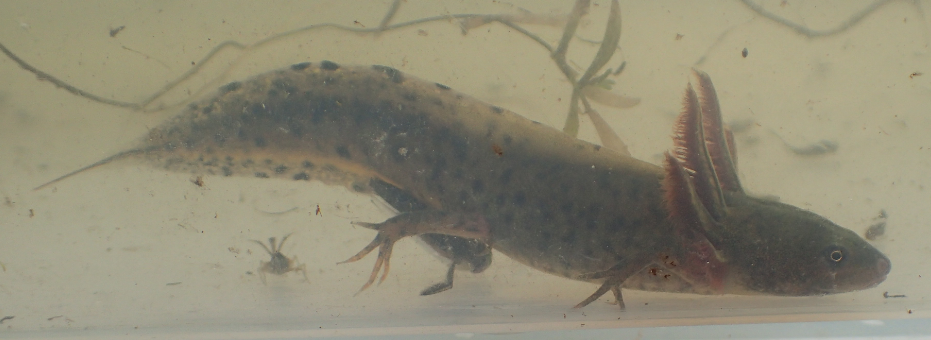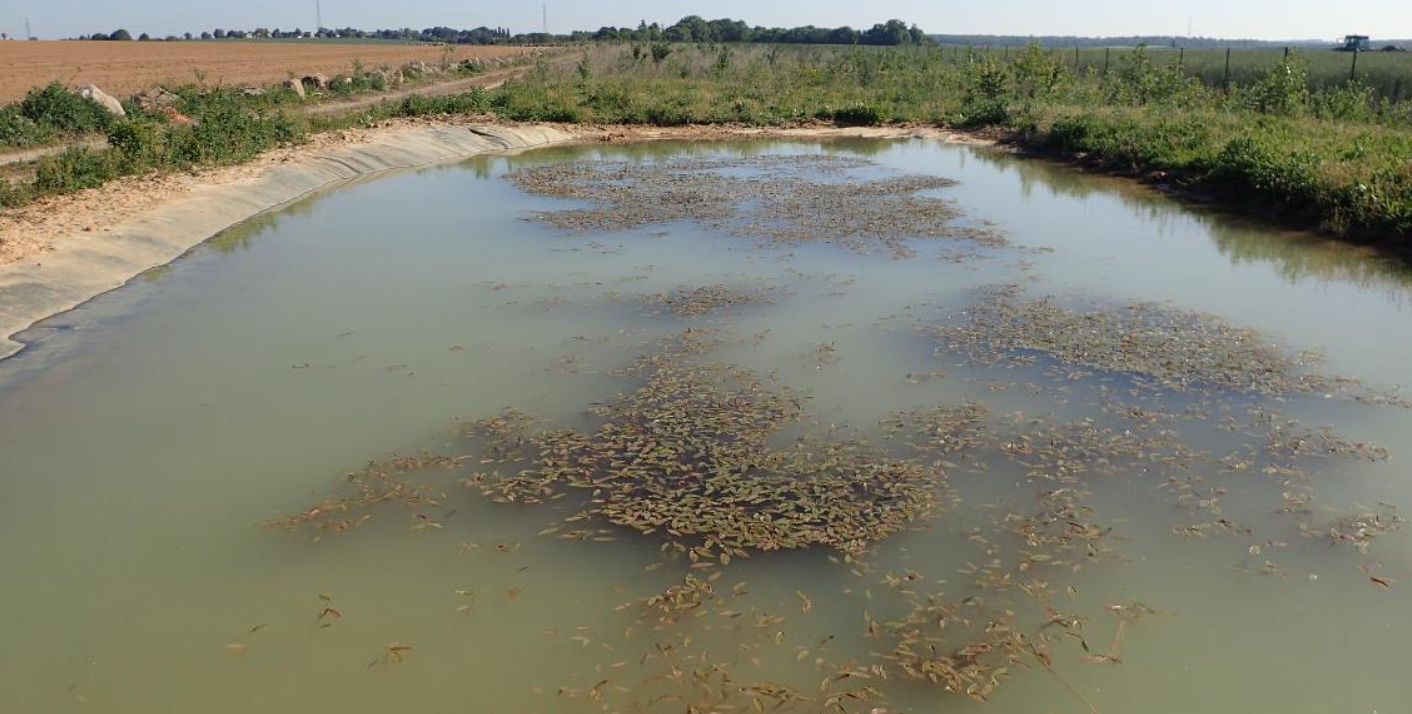The first transfer of crested newt eggs in 2020 was made in late May.
In their peaceful green setting, the source populations of Crested Newts were able to lay in peace. Perfect timing. Because the translocation campaign of the 3 target species of amphibians (Natterjack toads, Yellow-bellied toads and our crested newt) of the Life in Quarries project is in full swing.
How to recognize it and show off in front of your friends?
If you are not an expert in amphibians in general (and Newts in particular), wait for the spring to come and pray to find a male.
Indeed, during the reproduction period, the male wears a high serrated crest on its back. Once this exhausting period of the year is over, the Crested Newt… is not crested that much anymore and leaves his aquatic environment to wander on dry land while its crest decreases sharply.
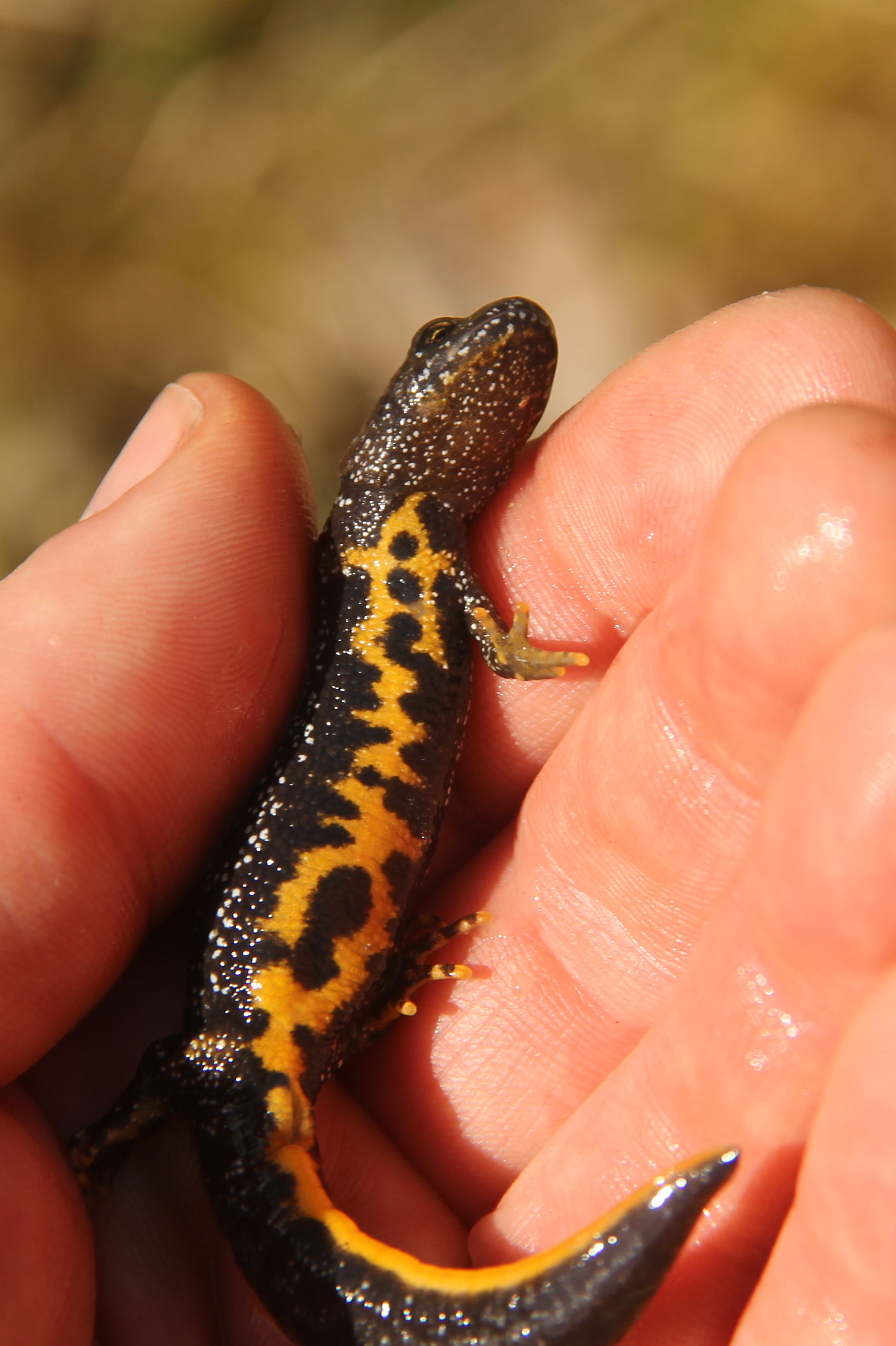
10 to 15 cm long for males and 11 to 18 cm for females, it has a grainy skin and a yellow-orange ventral side often dotted with large irregular black dots.
The sexual dimorphism is particularly marked for this species as the female, larger and with duller colors, does not wear a dorsal crest. Threatened species, in strong regression in our modern landscapes , this small amphibian is the largest and rarest of the 4 species of Newts present in Wallonia.
But Triturus cristatus also wanders on dry land as in meadows, hedges, groves … and floated quarries !
Newts and strips
To collect the egg-laying fragments intended to found new populations in the selected receiving quarries, the Life in Quarries teams placed, earlier this year, a large number of plastic stripes on the banks of the source ponds.
Three to four weeks after fitting the strips, they are harvested and the egg-laying fragments (oval, greenish eggs of 2 mm, a little larger than those of other newts) are analyzed and then transferred to the receiving sites, located within a radius of fifteen kilometers.
And they didn’t get any break ! This year, no less than 135 “viable” eggs were collected from our 3 “source” ponds.
NB: On the strips, were also attached 77 eggs considered to be “non-viable” and 67 eggs of other species of newts. However, several of these “source” ponds with abundant aquatic vegetation, the Newts have somewhat abandoned the strips this year.
Tadpoles ? No : larvae !
If you are already a specialist in newt larvae, you will surely know that the crested newt larvae are quite easy to identify because, if they measure barely 1 cm at the hatching of the egg, they quickly reach a larger size than other species of newts (6 to 9 cm).
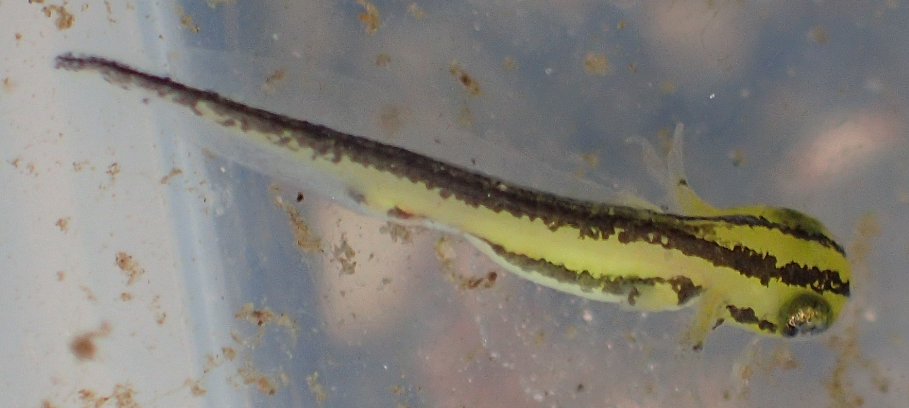 young larva of a Triturus cristatus
young larva of a Triturus cristatus
If, on the contrary, you have just learned that the Newts know a larval state, perhaps it will be easier to remember that those of Crested have long thin fingers, a high dorsocaudal crest and a pointed tail which is, sometimes, extended by a clearly visible filament.
Another tip: they do not present small clear spots at the base of the legs like the Salamander larvae. But to be honest, for this tip, you already must be quiet close of one of them…
Now that the eggs have been translocated in their new pond – on several working sites – we shall wait… and see. Indeed, in some time, as for all the actions of the Life in Quarries project, meticulous and repeated monitoring will allow us to take stock of this 2020 translocation campaign. Meanwhile, all we can do is to bid them farewell.


